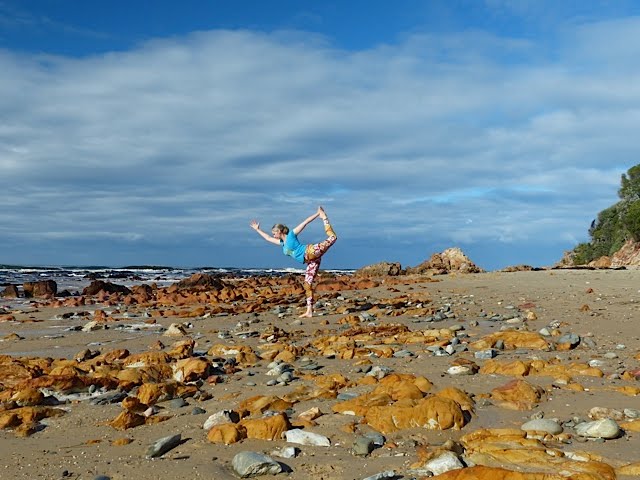Patanjali makes it clear in 1.2 of the yoga sutras that yoga is the ability to direct the mind on one object and keep it there fora sustained without destractions. In Buddhism, this sense of self or being separate - the much lauded individual in the modern world - is considered the cause of all suffering. That's right our suffering is created by ourselves and thus by extension can be eliminated by us (with lots of work). Much of the suffering is the mind wandering here and there, past and future, everywhere yet no where. How much of our suffering could be avoided if we could just see everything as one: everything connected like a huge web spirally out and back in again. A vortex of being rather than attachment and aversion.
How to do this? Well I like Judith Lasater description of yoga as the study of the self. The study of the strengths and weaknesses of the self, the habits and patterns of the self, and the different aspects of the self can be observed on our mat every day and then as they fan out into the world. Watching your thoughts in a formal practice of meditation can help us to see how busy the mind really is. I was listening to a talk about Zen Buddhism and they referred to the mind as a tiger that will eat you up and take every moment of your life. The practice of observing your thoughts quietly on your own can make it easier to recognise unhelpful or habitual patterns during the course of the day in communicating with others. Of course, as humans we fall over, blame someone else or ourselves, get angry, hold on to resentment, behave in ways we wished we hadn't but all this is okay because each time we notice we are experiencing a moment of awareness. A moment of awareness that can help us to see ourselves in others and forgive ourselves and them in a single breath. I'll keep working on that for the rest of my life - unwinding the self: seeing ourselves in others and in the world.
While yoga may be a method that helps us to unravel our sense of our self, I think any activity could serve this purpose: knitting, cooking, gardening, reading, singing. Any activity that helps us to see our reality as a mirror of the interconnectedness of everything.
As science and our hearts keep telling us we are the world and the way we live in the world affects all - the plants, animals, people, water and the air.
Om shanti,
Margot
How to do this? Well I like Judith Lasater description of yoga as the study of the self. The study of the strengths and weaknesses of the self, the habits and patterns of the self, and the different aspects of the self can be observed on our mat every day and then as they fan out into the world. Watching your thoughts in a formal practice of meditation can help us to see how busy the mind really is. I was listening to a talk about Zen Buddhism and they referred to the mind as a tiger that will eat you up and take every moment of your life. The practice of observing your thoughts quietly on your own can make it easier to recognise unhelpful or habitual patterns during the course of the day in communicating with others. Of course, as humans we fall over, blame someone else or ourselves, get angry, hold on to resentment, behave in ways we wished we hadn't but all this is okay because each time we notice we are experiencing a moment of awareness. A moment of awareness that can help us to see ourselves in others and forgive ourselves and them in a single breath. I'll keep working on that for the rest of my life - unwinding the self: seeing ourselves in others and in the world.
While yoga may be a method that helps us to unravel our sense of our self, I think any activity could serve this purpose: knitting, cooking, gardening, reading, singing. Any activity that helps us to see our reality as a mirror of the interconnectedness of everything.
As science and our hearts keep telling us we are the world and the way we live in the world affects all - the plants, animals, people, water and the air.
Om shanti,
Margot


